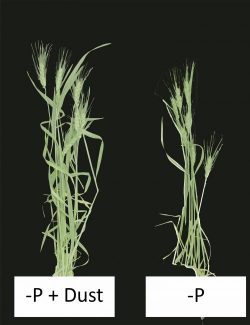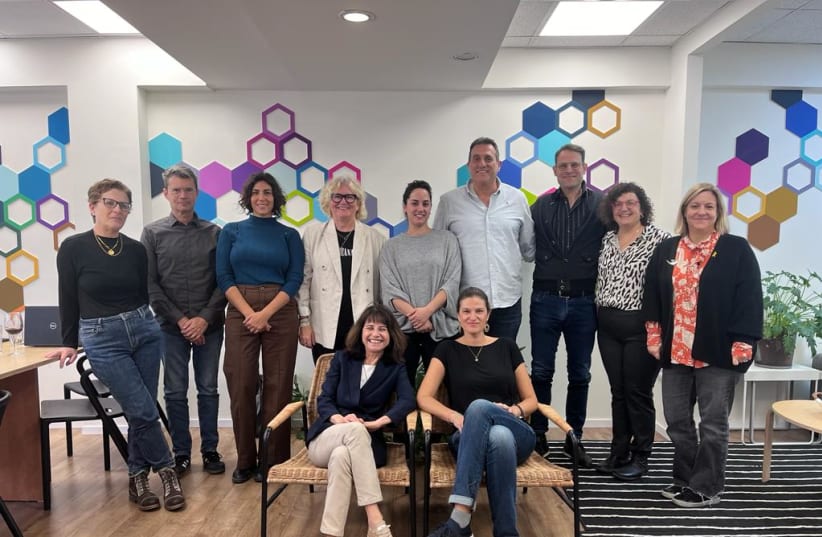
BGU Researchers Discover Plants Feed Off of Dust
BGU Researchers Discover Plants Feed Off of Dust
December 29, 2020
Desert & Water Research, Social Sciences & Humanities
The Times of Israel — In a breakthrough that could help farmers to reduce the use of environmentally damaging chemical fertilizers, BGU researchers have discovered that plants native to desert regions can help themselves to food by catching dust on their leaves and extracting what they need.
Dr. Avner Gross, a faculty member of BGU’s Department of Geography and Environmental Development, had a eureka moment during a walk outside his home at Neve Shalom, in the Judean Hills, outside of Jerusalem, immediately after a dust storm almost two years ago.

Dr. Avner Gross
“I’ve been working on dust for six to seven years and have seen it contains various elements [needed for plant growth],” Gross tells the Times of Israel. “It already seemed logical to me that plants would use it. Then in January last year, after a big dust storm, I went into the forest near my home and I noticed that dust had stuck to all the leaves. I wondered if there was more to this than met the eye.”
Experiments show that native Israeli plants such as wheat and chickpeas grow more hairs on their leaves when they are short on phosphorus — a building block needed by all cells of living things.
The hairs trap moisture, which makes them stickier and better able to catch dust particles from the air, and the leaves secrete acid that dissolves the phosphorus into a liquid form that the plant can absorb.
Dr. Gross, whose research has focused on the impact of climate change on the natural environment, approached Dr. Ran Erel of the Agriculture Ministry’s southern research station at Gilat, who was initially skeptical but willing to experiment.
The two of them chose to look at phosphorus, which is so essential to plants and to the fertilizer industry. They took pots of lettuce, starved them of phosphorus, and then sprinkled desert dust on the leaves, ensuring that none touched the soil. The plants doubled in size.
Gross unveiled the discovery at this month’s online meeting of the American Geophysical Union, and is working on publishing his findings in a peer-reviewed journal. It was earlier reported on by The Economist.
He surmises that the discovery could help cut down on the use of fertilizers that rely on phosphates.
“This could be very interesting with great potential,” Gross says. “It raises agricultural and climate questions. This knowledge could lead to a way of reducing chemical phosphate use by dusting the leaves, as well as possibly recycling dust, rather than mining it by taking it from building sites or quarries,” he states.
While researchers believe the amount of dust created by human activity is increasing, scientists are unsure whether a warming planet will result in increased dust or less of it. Gross’s findings suggest that in a less dusty world, some plants will lose out.
“Climate change is causing the earth’s deserts to move away from the equator towards us. So in areas with more dust, like Israel, dust-adapted plants will have a big advantage, but in other areas, where the dust disappears, this might have an adverse effect on plants,” he notes.
That certain plants can physically change their leaf surface when they need phosphorus and secrete the acid themselves to break it down is new to science — and apparently what plants in Israel and other dusty regions have been doing long before chemical fertilizers were invented.
After the initial experiments, Gross and Erel linked up with Ilana Shtein, an expert in plant anatomy from Ariel University in the West Bank, and hired Dr. Sudeep Tiwari, a researcher at BGU’s Department of Geography and Environmental Development, who is carrying out the actual experiments.

The wheat plant on the left has grown more than the control on the right, after having been dusted with phosphorus.
The experiments are now being expanded to tomatoes (native to non-dusty parts of central America), avocado (from tropical rainforests that receive Saharan Desert dust), and native Israeli trees, such as oaks.
The researchers are also looking at whether plants can extract other minerals from dust, such as iron, potassium, and zinc.
“From a genetic point of view, plants are more complex than people,” Gross observes. “They must find whatever they need without moving.”



